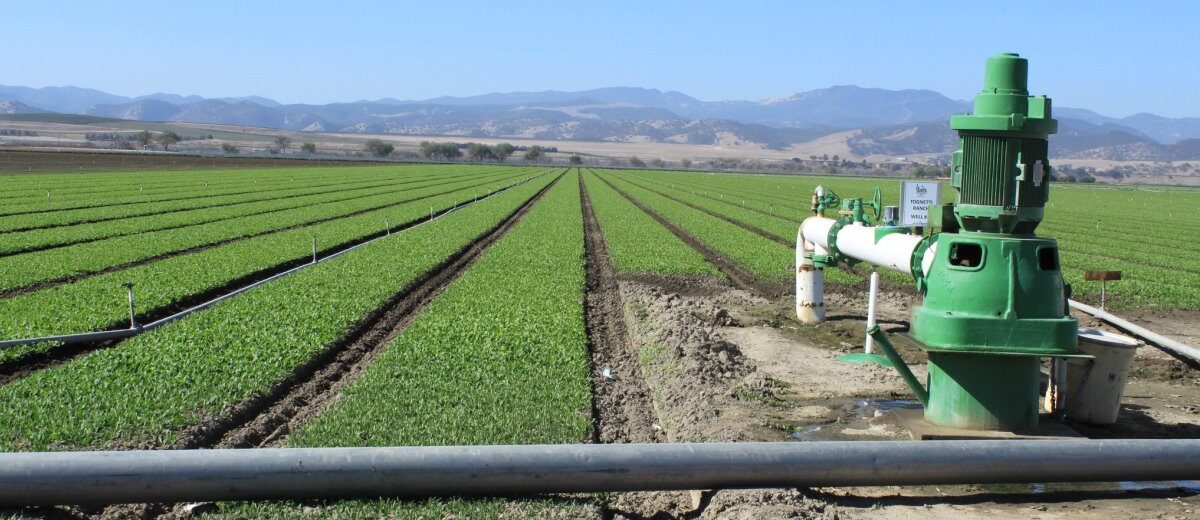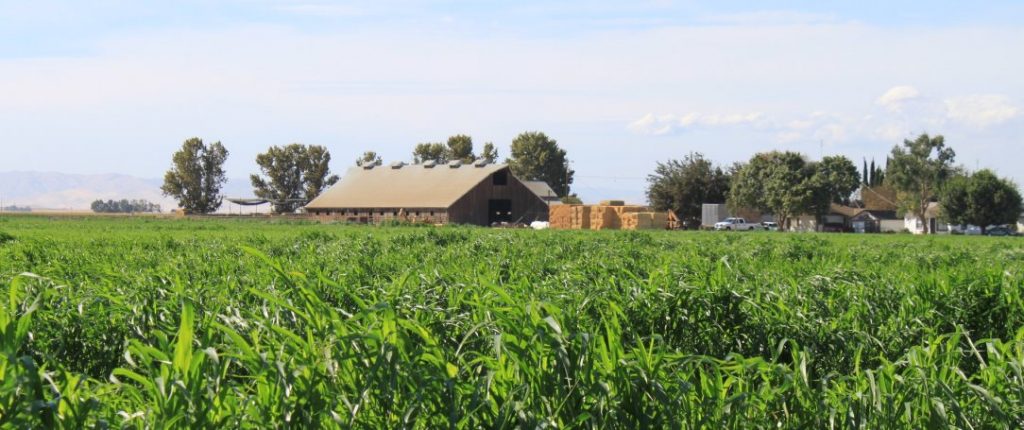 From Maven’s Notebook:
From Maven’s Notebook:
As groundwater sustainability agencies prepare their plans to meet the requirements of the Sustainable Groundwater Management Act (SGMA), they will likely utilize a variety of tools to achieve sustainability. In many subbasins, groundwater overdraft conditions will require GSAs to impose reductions in pumping in order to achieve sustainable conditions in the subbasin. To do this, GSAs will need set a limit or “cap” on the overall amount of groundwater that is removed from the subbasin, assigning portions of this capped amount to groundwater pumpers in the form of a pumping allocation.
Making pumping allocation decisions will be a difficult task for GSAs, as it will require restricting access to groundwater resources upon which the agricultural community, cities and towns, and others depend. Adding further complexity to the task, SGMA explicitly states that it does not alter water rights, which means groundwater sustainability agencies have to carefully navigate between the confines of water rights and SGMA requirements in developing and implementing their groundwater sustainability plans.
At the 3rd annual Western Groundwater Congress, hosted online by the Groundwater Resources Association of California in September of 2020, Dr. William Blomquist, a Professor of Political Science and more at Indiana University-Purdue University Indianapolis, gave a presentation of ongoing research he is doing with Dr. Christina Babbitt, California Groundwater Manager at the Environmental Defense Fund looking at how other groundwater basins have developed groundwater allocations.
Click here to read this article.

From the Environmental Defense Fund:
One of the biggest challenges to implementing California’s Sustainable Groundwater Management Act hovers around this two-part question:
Who gets to pump groundwater and how much do they get to pump? Or, put another way, who must cut their groundwater use and by how much?
As local groundwater agencies try to answer this difficult question on how to develop allocations, they face one major constraint: They can’t change groundwater rights.
Consequently, the path forward for many groundwater agencies is riddled with legal complexities and questions around equity that shouldn’t be ignored.
Click here to continue reading this article at the Growing Returns blog.
 Fairness – or at least the perception of fairness – could play a determining role in the future of California’s groundwater, according to new research. The study, published in Society and Natural Resources, evaluated 137 surveys of Yolo County farmers to gauge their perceptions of fairness for groundwater allocation strategies and dispute resolution options. As required by the state’s Sustainable Groundwater Management Act (SGMA) in January of 2020, Groundwater Sustainability Agencies (GSAs) of critically over-drafted water basins submitted plans to sustainably manage groundwater pumping and allow for basin recharge within the next 20 years. These plans, which inevitably include stricter allocation of groundwater and pumping limits, directly impact farmers of the nation’s largest agricultural state.
Fairness – or at least the perception of fairness – could play a determining role in the future of California’s groundwater, according to new research. The study, published in Society and Natural Resources, evaluated 137 surveys of Yolo County farmers to gauge their perceptions of fairness for groundwater allocation strategies and dispute resolution options. As required by the state’s Sustainable Groundwater Management Act (SGMA) in January of 2020, Groundwater Sustainability Agencies (GSAs) of critically over-drafted water basins submitted plans to sustainably manage groundwater pumping and allow for basin recharge within the next 20 years. These plans, which inevitably include stricter allocation of groundwater and pumping limits, directly impact farmers of the nation’s largest agricultural state.
Below, the paper’s lead author, Courtney Hammond Wagner, and senior author, Meredith Niles, discuss their research examining what farmers identify as fair water allocation and how these perceptions can ultimately impact successful SGMA execution. Hammond Wagner is a postdoctoral scholar at Stanford’s Water in the West program, and Niles is an assistant professor at the University of Vermont.
Click here to read this article.
 Eric Averett is General Manager with the Rosedale-Rio Bravo Water Storage District, which is one of several water districts within Kern County. Kern County is the largest basin in the state, is designated as critically overdrafted, and is arguably one of the most complex with respect to the number of water interests that are involved. In addition, they have had to deal with approximately 500,000 acres of undistricted or ‘white land’ areas. In this presentation from the Western Groundwater Congress, Mr. Averett discusses how his district and Kern County have been grappling with how to establish groundwater pumping allocations.
Eric Averett is General Manager with the Rosedale-Rio Bravo Water Storage District, which is one of several water districts within Kern County. Kern County is the largest basin in the state, is designated as critically overdrafted, and is arguably one of the most complex with respect to the number of water interests that are involved. In addition, they have had to deal with approximately 500,000 acres of undistricted or ‘white land’ areas. In this presentation from the Western Groundwater Congress, Mr. Averett discusses how his district and Kern County have been grappling with how to establish groundwater pumping allocations.
Click here to read this article.
“On a blistering hot July day in San Miguel, Robert Galbraith, 68, bends down and scoops up two handfuls of dry soil. He spreads his fingers and lets the dirt fall back to his fallowed ground. The motion is symbolic of how Galbraith feels his family farm is slipping away from him.
A San Luis Obispo County policy regulating pumping from the Paso Robles Groundwater Basin has hamstrung how Galbraith can farm his land. … ”
Read more from New Times SLO here: Thirsty for sustainability: Is Paso Robles any closer to solving its groundwater problem?
““We are real close to defining exactly what stability is and how it is going to affect the valley,” said Indian Wells Valley Groundwater Authority Chair Ron Kicinski to the Rotary Club of China Lake on Wednesday. Kincinksi, who also serves on the IWV Water Board, made it clear he was speaking as a member of the IWVGA.
Specifically, Kicinski said the model at the moment is that sustainability is being defined at using around 12,000 acre-feet a year of water. … ”
Read more from the Ridgecrest Independent here: Banking water for LADWP? Kicinski talks groundwater with Rotary Club
“The survival of a tiny, unique, desert neighborhood is threatened because more than 60 years ago the community decided to form a small water district instead of digging individual wells.
Borrego Air Ranch is built around a private air strip where residents’ garages double as airplane hangers. It’s located on the southeastern outskirts of unincorporated Borrego Springs, less than a mile from Anza-Borrego Desert State Park.
For many years, Borrego Springs has been living on borrowed time, drawing far more water from the ground than its rains replace, a practice the state says can no longer continue. … ”
Read more from the San Diego Union-Tribune here: Borrego Air Ranch: A desert community in peril
“The Indian Wells Valley Groundwater Authority Policy Advisory Committee talked more modeling scenarios during its May 6 meeting from its angle.
According to committee chair Dave Janiec, the IWVGA’s technical advisory committee received updates on the current three modeling scenarios being developed for groundwater pumping. The scenarios reflect potential options of how the IWVGA could adopt once its groundwater sustainability plan is submitted to the Department of Water Resources.
The plan is currently being developed and is due by Jan. 31, 2020 as required under the Sustainable Groundwater Management Act. … ”
Read more from the Ridgecrest Independent here: Indian Wells Valley: PAC discusses modeling scenarios
From the Tri County Sentry (Part 1):
“The Oxnard City Council discussed its water future in detail during the Jan. 15 Oxnard City Council meeting as the group learned about how it may allocate groundwater over the next 20 years. The group learned that it needs to make some adjustments and use less water moving forward, which will be a challenge.
Assistant City Attorney Khiri Klima made the presentation and said the Fox Canyon Groundwater Management Agency’s (GMA) groundwater allocation ordinance would significantly affect the city’s groundwater pumping for the next 20 years. … ”
Read more the Tri County Sentry here: Oxnard prepares for changes in groundwater use (Part 1)
Read Part 2 here: Water rates in Oxnard may rise in the future
From the Ridgecrest Independent:
“The Indian Wells Valley Groundwater Authority Technical Advisory and Policy Advisory committees met Thursday at the Indian Wells Valley Water District boardroom. Special Legal Counsel Jim Markman was present during both meetings, though he mainly spoke and gave updates on the pumping and allocation process during the first portion of the PAC meeting.
Markman discussed his encounters and experience up until this point with other legal counsel involved in a handful of successful water negotiations in California, all of which had different scenarios and factors to them to show the possible solutions and outcomes to the committee. … ”
Read more from the Ridgecrest Independent here: Indian Wells Valley: Groundwater Authority committees meet for first time in 2019




